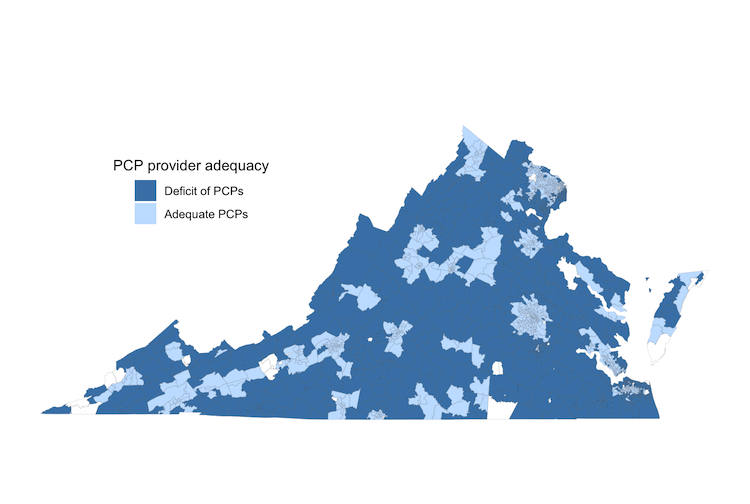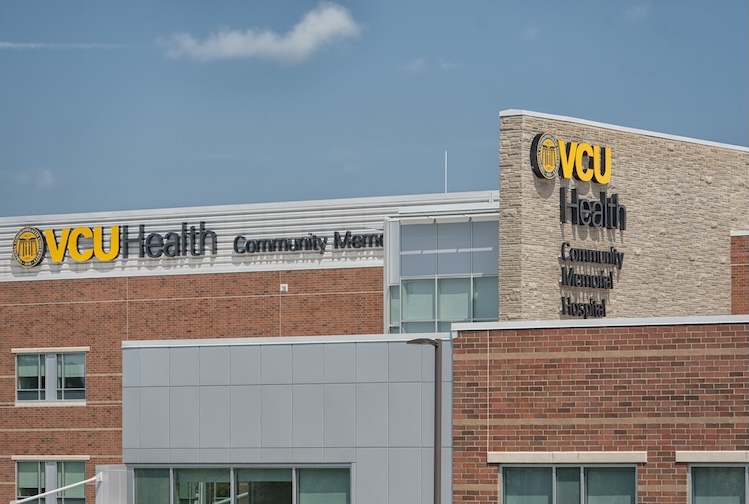New study identifies where there are primary care shortages in Virginia
VCU researchers found that 44% of Virginia neighborhoods lack adequate access to primary care physicians, primarily in rural communities.
August 07, 2025 Insights from the new study could inform future strategies for targeting neighborhoods most in need of primary care services. (Getty Images)
Insights from the new study could inform future strategies for targeting neighborhoods most in need of primary care services. (Getty Images)
By Olivia Trani
Primary care is the foundation of any health care system, yet there are not enough doctors to meet the growing demand for these services.
A new study led by researchers at Virginia Commonwealth University found that nearly one-half of neighborhoods in Virginia don’t have enough primary care physicians to meet the health needs of residents, with rural communities being hit the hardest by workforce shortages.
The study, published in the Annals of Family Medicine, was led by Hannah Shadowen, Ph.D., an M.D.-Ph.D. student at VCU’s School of Medicine and School of Public Health, and Alex Krist, M.D., a professor in the VCU School of Medicine’s Department of Family Medicine and Population Health.
They say these findings could help health care systems, government officials and community partners develop strategies to increase healthcare access for Virginians.
“In order to develop interventions that effectively address primary care shortages, we need to better understand which communities are facing the biggest barriers to access,” Krist said.
Why are primary care doctors important for public health?
A primary care physician serves as a jack of all trades, with the ability to provide care across a person’s lifespan.
“Not only do they help treat acute medical problems, they also play an important role in helping patients manage chronic health issues like diabetes and hypertension,” Shadowen said.
They also play an important role in preventative care by routinely screening for diseases and providing guidance on healthy lifestyle choices. Studies have shown that communities with less access to primary care services tend to experience increased numbers of hospitalizations and emergency department visits, shorter lifespans and greater health inequities.
How were areas with primary care shortages identified?
Using anonymized health care claims data from 2019 and census data, the research team calculated the total patient capacity of all primary care physicians within a 30-minute drive of specific areas and neighborhoods in Virginia.
The researchers also assessed various demographic factors to better understand whether certain community characteristics were associated with primary care access. The data showed that 4,850 physicians provided primary care services in Virginia in 2019, with each seeing 1,368 patients on average. The researchers’ analysis revealed that about 44% of these areas did not have adequate access to primary care physicians, affecting nearly 3.8 million Virginians.

The researchers identified primary care provider deficiencies by calculating the total patient capacity of all physicians within a 30-minute drive of each census tract and compared this number with the census tract’s population size. (Contributed by Hannah Shadowen)
According to the study, what areas of Virginia have less access to primary care doctors?
In particular, rural communities had significantly less primary care access compared to suburban or urban neighborhoods. On average, the primary care capacity of rural neighborhoods was approximately 725 patients fewer compared with that in suburban areas.
The researchers also found that areas with higher proportions of Black residents had greater access to primary care services than those with predominantly white residents.
“This may be due to the fact that predominantly Black neighborhoods in Virginia tend to be in urban areas, which this study has shown typically have a greater number of primary care physicians,” Shadowen said. “These trends could also be the result of local and national efforts to address the health needs of historically marginalized neighborhoods, such as Federally Qualified Health Centers and pathway programs.”
What do these results mean for addressing primary care shortages?
These findings show that more work needs to be done to increase Virginia’s rural primary care workforce. Expanding residency programs in rural settings or establishing incentive programs like loan repayment benefits could potentially help with closing these gaps in health care access.
Read more about this VCU study and the effects of primary care shortages.




